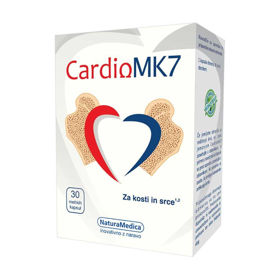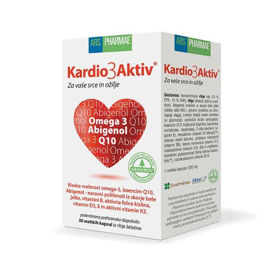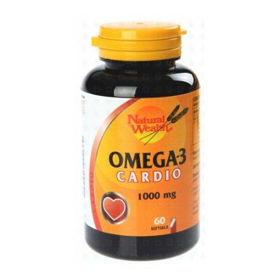For the heart to pump blood efficiently daily, it needs constant oxygen and nutrients. Two large, branching coronary arteries supply the heart muscle with oxygen-rich blood. If one of these arteries or branches closes, part of the heart does not get oxygen and nutrients; the condition is called ischemia. If the ischemic attack lasts long, the affected heart tissue dies. This event is the basis of a heart attack, which is also called a myocardial infarction.
HEART INFARCTION: General | Symptoms | Causes | Areas of Pain | Diagnostic Procedures | Treatment | Type A Problems | Prevention | Questions and Answers | Sources/references
Most heart attacks develop over several hours. (But never delay! Seek medical attention immediately if you think a heart attack has begun.) Signs can be subtle, e.g., only shortness of breath, fainting, or nausea; some have no signs. Most of them have pain. The pain of a severe heart attack can be compared to a vast fist that hugs and squeezes the heart; if the attack is mild, it can be mistaken for heartburn. It can be continuous or intermittent.
Most patients who experience a heart attack already have warning signs of angina pectoris - chest pain also triggered by ischemia. The difference is only in the degree of ischemia: in angina pectoris, the blood circulation is quickly restored, the pain disappears after a few minutes, and the heart is not permanently damaged; with a heart attack, the blood circulation is significantly reduced or completely interrupted, the pain persists, the heart tissue dies.
Figure: About a third of heart attacks occur without warning signs.
.jpg)
About a third of heart attacks occur without previous warning signs. They are associated with silent ischemia - periodic interruptions in the heart's blood circulation, which, for unexplained reasons, do not cause pain. However, they gradually damage the heart muscle. The condition can be detected by recording the EKG.
About a third of heart attack victims die before they reach the hospital; others may develop life-threatening complications during hospital treatment. More severe complications are stroke, long-term cardiac arrhythmias, congestive heart failure, formation of blood clots in the veins of the legs or heart, and aneurysm of the weakened heart cavity.
Video content: Acute heart attack and sudden cardiac arrest, prof. Dr. Marko Noč.

Those who survive the initial attack and have no significant complications a few hours later have a better chance of fully recovering. Recovery is always complicated because every heart attack partially weakens the heart. However, life usually returns to normal within three months.
Diseases of the heart and blood vessels (heart disease) are the leading cause of death in Slovenia - as in most developed countries - among which heart attack is first. However, these data are not inevitable: most forms of cardiovascular disease, including heart attacks, could be prevented.
Symptoms
Symptoms include:
- A throbbing or burning pain in the center of the chest that does not go away. It can spread to the neck, one or both arms or the jaw
- difficulty breathing, dizziness, nausea, chills, sweating, weak pulse
- cold and sweaty skin, pale or gray; the man looks seriously ill
- loss of consciousness (in about 1 in 10 cases, this is the only sign of a heart attack)
Consult your doctor if:
- If you notice typical signs of a heart attack in someone - call emergency medical services without delay!
- if you have angina pectoris and feel a characteristic pain that does not subside after medication - such pain may be a sign of a developing heart attack
- your angina pectoris attacks become more frequent, longer, and stronger - if it gets worse, the risk of a heart attack increases
- you are taking acetylsalicylic acid to prevent a heart attack and you notice that you have black, resinous stools - this may mean that the drug has "thinned" the blood too much, the condition needs to be corrected
Causes
Like an earthquake, a heart attack usually appears as a sudden disaster, but it is a sum of events that have occurred under the surface for years. A heart attack mainly results from coronary heart disease, an atherosclerotic disease in which fatty, calcified plaques build up in the heart's coronary arteries. (Blood circulation gradually weakens; the body can compensate for this by developing a system of collateral arteries that bypass the resulting blockages; collaterals significantly reduce the extent of damaged heart muscle in a heart attack.)
Image: Approximately one-third of heart attack victims die before reaching the hospital.
.jpg)
In the early 1980s, researchers proved that the direct cause of almost all heart attacks is not the atherosclerotic plaque itself but the formation of a blood clot on top of the plaque, interrupting the flow in an already narrowed vessel.
Where can the pain be?
Pain from a heart attack can occur in several areas. In the front of the body, the most likely places are the middle and left side of the chest, the neck, and the inside of the left arm. The pain sometimes spreads to the jaw, the right side of the chest, the right arm, and shoulders, and to the area between the spoon and the navel. In the back, pain can appear between the shoulder blades.
Image: Heart attack pain can occur in several areas.

Although all the steps leading to a heart attack are unclear, the main risk factors are well known. Some of them we can handle. The main ones are high blood pressure, high cholesterol, obesity, smoking, and a sedentary lifestyle. Stress also increases the risk, and exertion and excitement can trigger an attack.
Men over 50 with a family history of heart disease are particularly prone to heart attacks. A high concentration of estrogen in the blood protects women before menopause, but after menopause, their risk increases significantly. Some women opt for estrogen replacement therapy after menopause. However, you should know that increased estrogen concentration increases the risk of breast and uterine cancer.
Diagnostic procedures
Cardiologists use various tests and imaging methods to diagnose a heart attack and to determine the location of the artery blockage and tissue damage. An initial assessment of the patient's condition is made by recording the heart's electrical activity with an ECG and laboratory tests.
Imaging of the heart and coronary arteries, made with angiography or radioisotope methods, makes it possible to determine the location of the affected areas and the location of the coronary artery blockage. The attending physician can determine the correct treatment and predict possible complications based on this data.
Treatment
A heart attack is an emergency that must be treated immediately with conventional treatment. Alternative treatments cannot be compared to conventional drug and surgical treatment during the initial emergency period and the patient's follow-up period. Alternative medicine can make a significant contribution to heart attack prevention and recovery.
Conventional medicine
Patients with a heart attack are usually admitted for at least 36 hours to the special coronary wards of the hospital. Standard medications are pain relievers, e.g., morphine, a beta blocker to calm the heart, and acetylsalicylic acid to reduce blood clotting. Sometimes, they use drugs that break up the blood clot, such as t-PA and streptokinase. The latter drugs are most effective if the patient receives them within a few hours of the onset of the heart attack. With emergency angioplasty or surgery, a blood clot can be removed, blocked arteries can be opened, or coronary vessels can be bypassed.
Video content: How to survive a heart attack alone | Dr. Mandell.

Once patients pass the critical phase, they continue to receive beta blockers to calm the heart, nitrates to increase flow through the heart's coronary vessels, and anticoagulants such as heparin, warfarin, and acetylsalicylic acid to prevent excessive blood clotting.
Heart attack patients are constantly monitored during hospital treatment by being connected to ECG monitors, as heart rhythm disorders may develop. If the heart starts beating, stop.












 Facebook
Facebook
 Instagram
Instagram
 info@moja-lekarna.com
info@moja-lekarna.com

